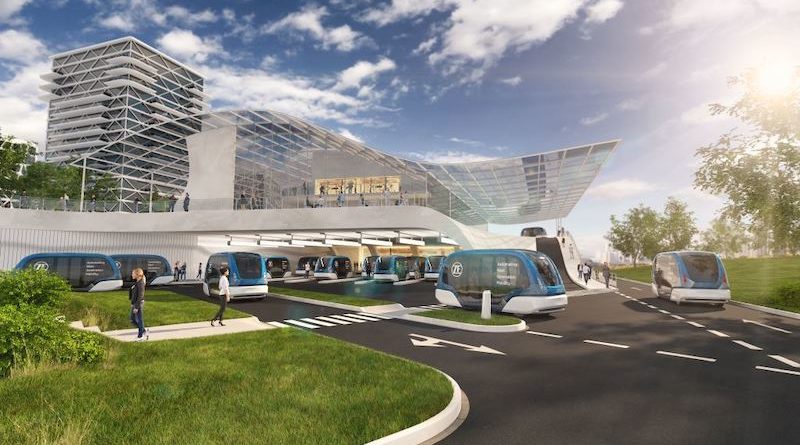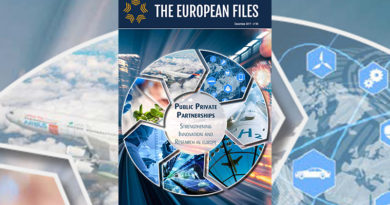
Comfortable, Clean, Autonomous: The Transformation of Public Transport
Individual and personal mobility have so far been at the heart of our transport system. Today mobility is changing, and with it the entire industry and its players. Our company, ZF, has developed over the past 100 years from a gear supplier to the Zeppelin into a foundation-owned, globally active technology company automating and electrifying all vehicle categories. Whether transport operators, manufacturers or suppliers, the mobility industry is facing numerous and fundamental transformation processes.
One of the biggest is the urgently needed reduction of CO2 emissions in the fight against climate change.
The mobility sector, including public transportation, must make a significant contribution: the European Commission’s “Green Deal” calls for a reduction in CO2 emissions in Europe of at least 55% by 2030 compared to 1990, and for Europe to be completely climate-neutral by 20501.
Increasing the quality of urban life
Sociopolitical reasons are additional drivers behind the transformation of public transport and public space as a whole. Half of the world’s population already lives in cities; by 2050, this figure is expected to rise to two-thirds. Inner cities are overcrowded, traffic jams occur regularly, and more and more motorized vehicles occupy public space. It is necessary to reduce the number of vehicles to avert constant traffic congestion and to use the spaces in urban areas differently2.
Another factor is the inadequate connection of suburbs and rural areas to urban centers, which further drives the use of private transport. The increasing shortage of drivers for conventional forms of public transportation means that the necessary frequency of trips can be mapped less and less adequately, resulting in a further growing discrepancy between mobility supply and demand. Finally, the Corona pandemic shows that more intelligent forms of mobility are needed to avoid overcrowded buses and trains.
Autonomous transportation systems (ATS) offer an effective solution to these current mobility challenges: safe, affordable and comfortable mobility on a continuously serviceable and sustainable basis. At the heart of the ATS are driverless shuttles operating on predefined routes completely autonomously.
The market is moving in this direction: With a projected demand of up to 170,000 shuttles worldwide and 51,000 in the EU per year in 20303, we have an opportunity to reduce significant traffic congestion in cities and potentially avoid driving bans. This not only reduces emissions, but also frees up land that can be used for other purposes (e.g., additional green spaces, bike paths, etc.), increasing the quality of urban life.
Autonomous shuttles already operate today
Is this technology ready for deployment? Driverless shuttles are already in operation today, able to drive in urban traffic at up to 40 km/h, which is in line with the average speed in large German cities4. This enables new, economically viable mobility concepts such as improving connections between rural and suburban areas and city centers. Tapping into this potential would revolutionize public transport with timetable-free and demand-responsive routes, supporting equal transport opportunities for urban and rural areas.
We are about to enter a period of technology leaping in the operation of driverless public transport. The tried and tested ATS on segregated lanes have been running in Dubai and Rotterdam since the end of the 1990s –without a driver.
The advantages of segregated lanes structurally separated from other road users are well known: Shuttles pass the congestion, so users are not held up. As a result, high levels of availability and swifter travel speeds can be achieved. This is a highly effective way to solve the traffic chaos in crowded inner cities. Compared to robotaxis, autonomous public transport leads to a reduction in the number of vehicles in inner cities and a reduction of carbon footprint in the short term.
We are on the brink of seeing the first ATS in mixed traffic. This opens up a wide array of use cases enabling expansion of flexible public transport offerings, using existing traffic infrastructure on a variety of routes in both urban and rural areas. Over the next few years, the system’s technical limits will be gradually expanded so that more complex routes can be served. For example, the maximum speed may increase from the current 40 to 80 km/h.
Reactivate railroad tracks to connect rural communities
An application case with significant potential is the reactivation of disused railroad tracks, of which there are currently about 280 in Germany – it is a similar picture across Europe. Often deactivated due to lack of economic viability, these tracks can be operated economically again due to the advantageous cost structure of autonomous shuttles. Here the ATS complements the existing public transport (e.g. rail). Unlocking this use case would be a triple win: for connecting rural and suburban communities, for today’s commuters stuck in traffic and for air quality. Public authorities can help public transport operators with funding to kick-start projects and provide financial support to municipalities to install the necessary intelligent road infrastructure (e.g. smart traffic lights).
_____________________________________________________________________
1 Delivering the European Green Deal | European Commission (europa.eu)
2 https://www.berylls.com/wp-content/uploads/2017/12/Berylls_Studie_Mobilität.pdf
3 ZF internal market prognosis
4 https://www.adac.de/der-adac/aktuelles/studie-verkehrsfluss-in-staedten/




